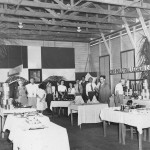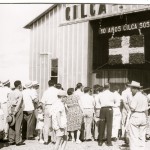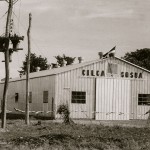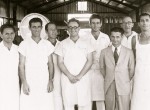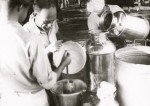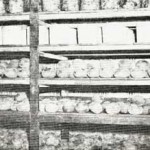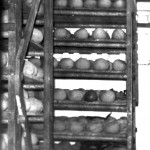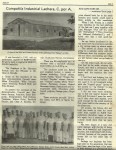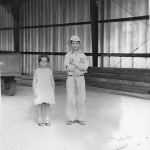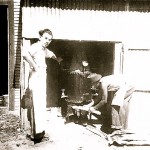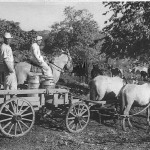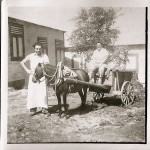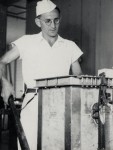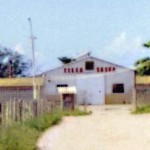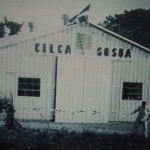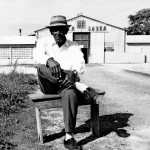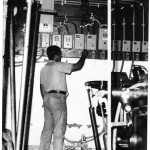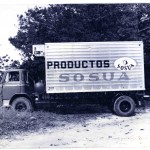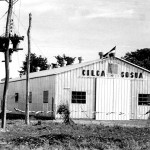The CILCA, or Cooperativa Industrial Lechera C. por A., was a dairy processing facility that grew out of a dairy cooperative established in 1941 to sell cheese and butter. By 1941, cattle farming had proven to be the better alternative to the raising of crops, which didn’t grow well. Eventually, the breeding of imported and local stocks of cattle increased milk production. With the financial backing of DORSA and the gift of 70 cows and farmland from Trujillo to the settlers, the CILCA eventually became the most important source of income for the Sosúa settlers.
Farmers milked their cows and then delivered the milk to be processed by the CILCA twice daily, once in the early morning and once in the late afternoon. When the settlers first turned to cattle farming, they took the milk by horse and mule-drawn carts to Bombita, where the CILCA was originally located. Later, CILCA picked up milk directly from the farms. The milk was processed and sold as butter, milk, and various types of cheese. In the beginning, household refrigerators were used to keep the butter, then larger cooling rooms were used, and eventually, with the financial backing of DORSA, commercial refrigeration was acquired. The products were sold for a number of years out of a small stand in front of the Colmado.
The CILCA of the 1950s to the 1980s was located in El Batey in front of what is known today as Morúa Beach. It consisted of a large one-story building with several large holding tanks, from which the milk was delivered to machinery that extracted the milk fat for the production of butter and other by-products. Inside the building, in cool rooms, cheese was laid to age. The CILCA factory, which was managed by Walter Biller for many years, expanded over the years as more equipment was brought in to meet the needs of increased demands and modernization. In the late 1950s, an expert in cheese production from the United States, Mr. Howard Gordon, was hired by DORSA to help develop a larger variety of cheeses. Some of the cheese which would eventually be produced included Holandes, Danes, Popular, Victory, Cheddar and others.
Many of the settlers became cattle farmers and were allowed to buy shares of the CILCA. Each member had one vote in its co-op meetings. By the early 1950s, the CILCA’s dairy products were sold throughout the country. In the meantime, the success of the CILCA model promoted another similar co-op by the settlers, the Ganadera, which produced meat products at a separate location. Although the production of meat and dairy products continued to be housed in separate facilities, in the late 1960s the CILCA and the Ganadera were combined under La Corporación C. por A., and by the early 1970s its products were marketed under the sole label Productos Sosúa. In the mid-2000s, Productos Sosúa, which was by now owned by second generation settlers, was sold. The dairy production continues operations at a new location in Sosúa.
PHOTO GALLERY
- CILCA products exhibition
- CILCA 10th year anniversary
- CILCA building
- CILCA personnel: Walter Biller, Julius Papernick, Martin Katz, unknown, Kurt Wellisch, Walter Blum, unknown, Max Milz
- Martin Katz making cheese at the CILCA
- CILCA personnel
- Aging cheese
- Aging cheese
- CILCA report in SOSUA Newsletter
- Inside the CILCA building
- Unknown CILCA workers
- Milk delivery
- Unknown settler with the daily milk production
- Hilde Schwarz and unknown with daily milk transport
- Walter Biller working at the CILCA
- CILCA building
- CILCA building
- CILCA
- CILCA’s main electrical panel
- “Productos Sosúa” truck
- “Productos Sosúa” truck
- CILCA in the 1970’s

